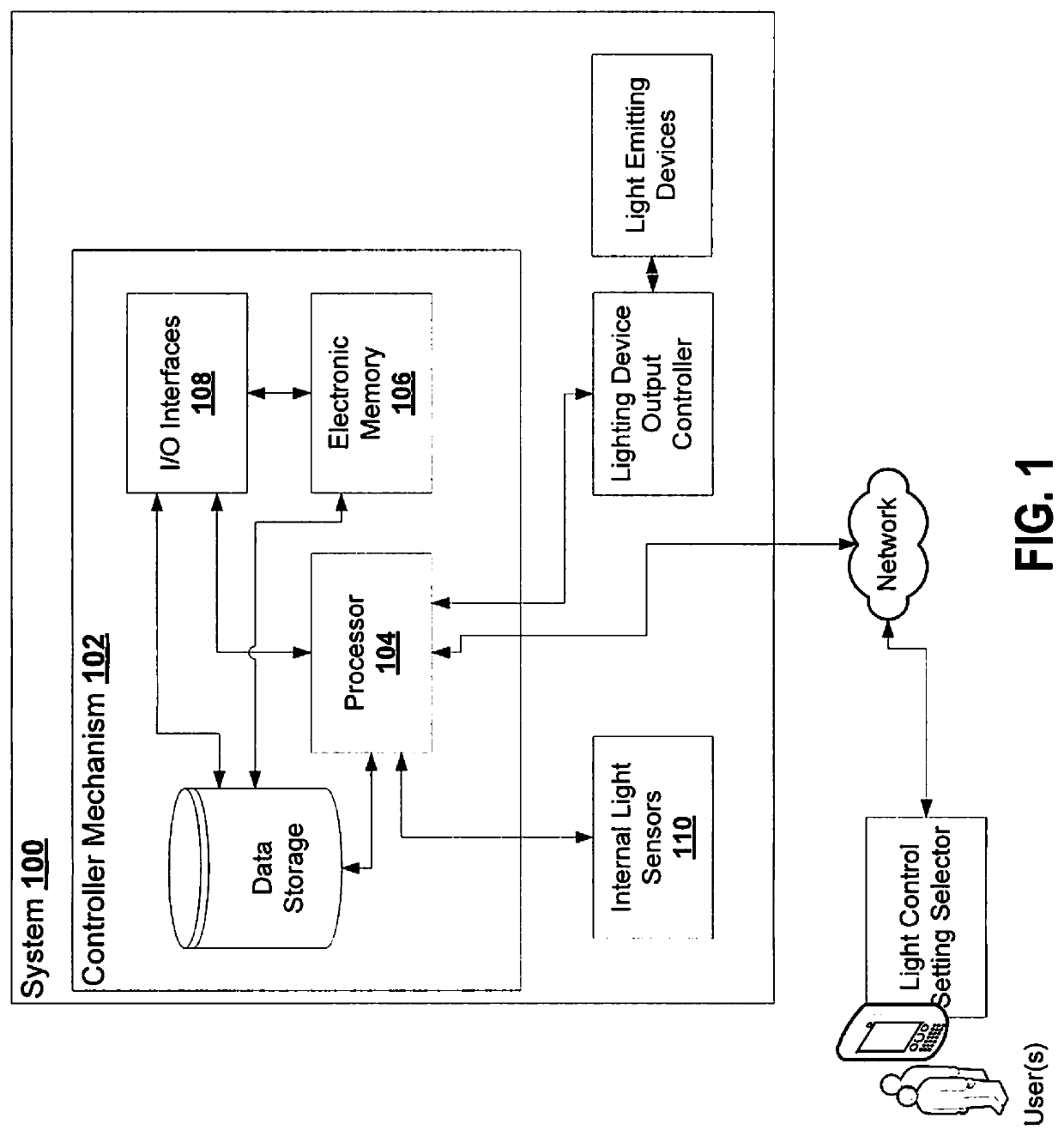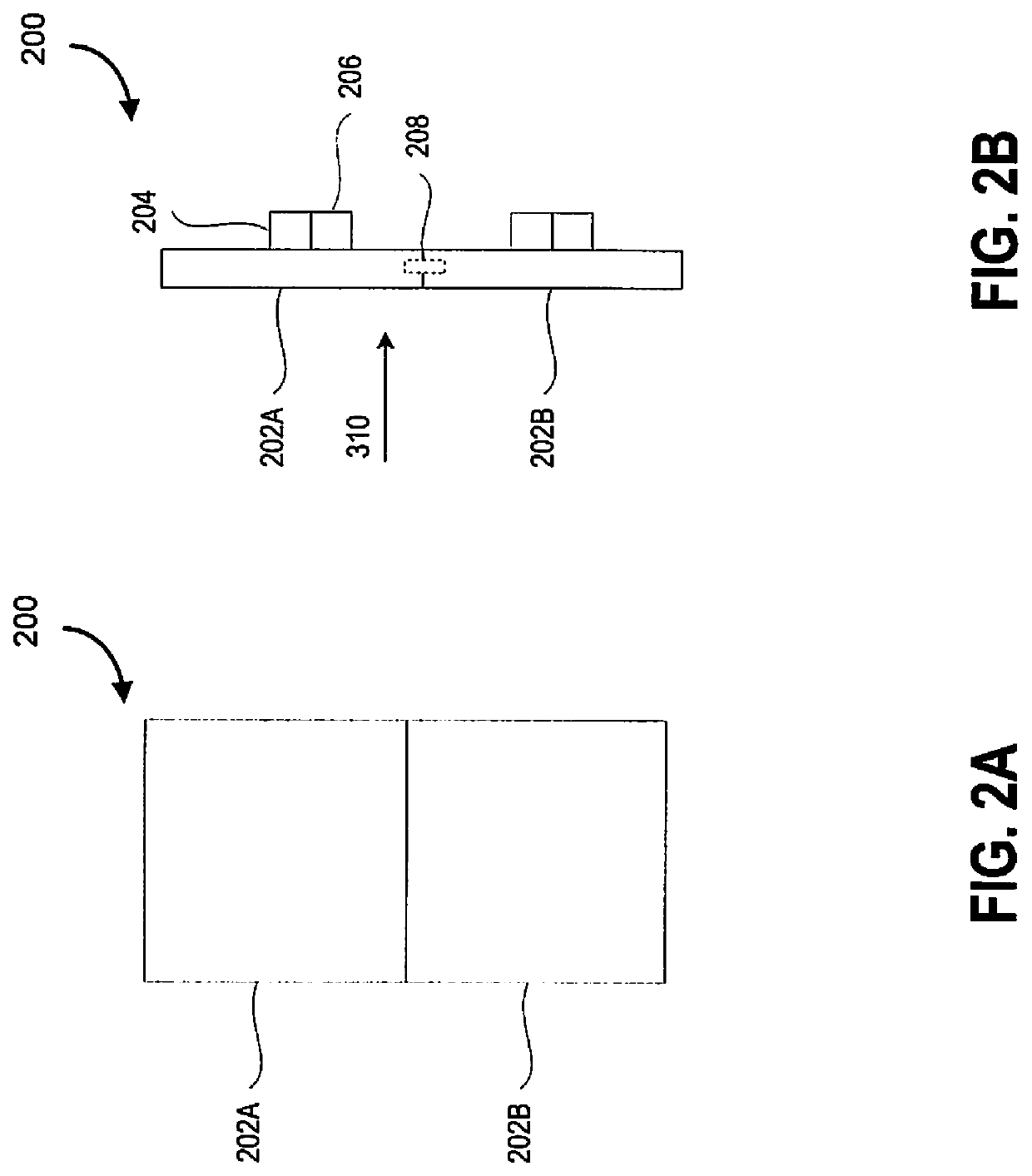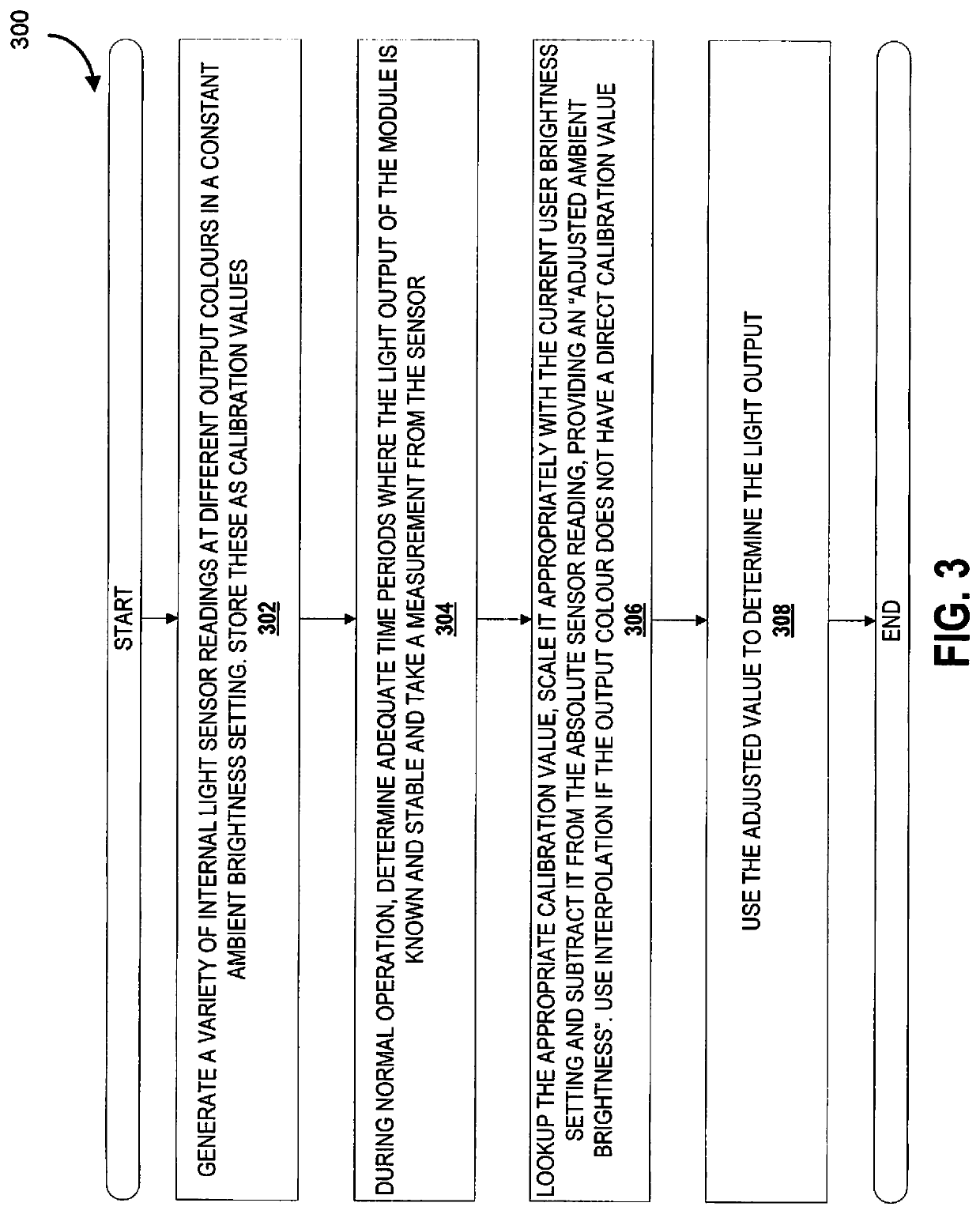Systems and methods for adjusting light output
a technology of light output and system, applied in the direction of electrical devices, etc., can solve the problems of affecting the usefulness of light sensors in relation to practical applications, complicating the absolute reading of ambient light sensors, and reducing aesthetic uniformity, so as to reduce or eliminate the effect of light feedback
- Summary
- Abstract
- Description
- Claims
- Application Information
AI Technical Summary
Benefits of technology
Problems solved by technology
Method used
Image
Examples
Embodiment Construction
[0025]As described in various embodiments, compensation mechanisms are provided that aid in reducing or eliminating effects of light feedback.
[0026]Modulating output brightness levels of a system based on ambient light input is a technically challenging endeavor, as multiple considerations must be accounted for. To maximize aesthetic uniformity between modules, in some embodiments, the light sensor is placed behind optical elements within the panel, hidden from direct view by an observer (e.g., for aesthetic purposes such that the modular lighting appears to the observers as a fully lit object).
[0027]This introduces light feedback from the lighting elements (e.g., LEDs) in the panel that must be factored out to obtain accurate readings that reflect true ambient light levels in a room coming from other light sources.
[0028]Having the light sensor obstructed yields technical challenges from a sensory perspective and a specific approach for calibration is described in various embodiment...
PUM
 Login to View More
Login to View More Abstract
Description
Claims
Application Information
 Login to View More
Login to View More - R&D
- Intellectual Property
- Life Sciences
- Materials
- Tech Scout
- Unparalleled Data Quality
- Higher Quality Content
- 60% Fewer Hallucinations
Browse by: Latest US Patents, China's latest patents, Technical Efficacy Thesaurus, Application Domain, Technology Topic, Popular Technical Reports.
© 2025 PatSnap. All rights reserved.Legal|Privacy policy|Modern Slavery Act Transparency Statement|Sitemap|About US| Contact US: help@patsnap.com



